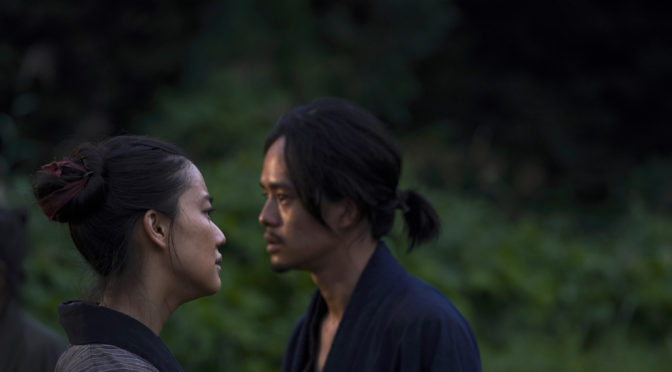 Paying homage to a great array of old titles, Tsukamoto builds his own playground where he can showcase his deconstruction of the samurai culture.
Paying homage to a great array of old titles, Tsukamoto builds his own playground where he can showcase his deconstruction of the samurai culture.
As a genre, jidaigeki (period drama often set in the Edo period) has always been a huge hit, especially between the 50s and the 70s when the majority of the films falling into this category were produced. Browsing through a list of the most notable ones, iconic names of Japanese cinema’s pantheon inevitably pop up: Ōzu, Naruse, Mizoguchi, Oshima, and the most memorable Kurosawa – all of them had a go with the jidaigeki at least once. Spanning from films to anime and manga alike, the genre has been prolific throughout the years until last year when cult director Tsukamoto Shinya decided to leap from the metallic body horror of his 1989 masterpiece TETSUO, THE IRON MAN (TETSUO) to the grass and soil-laden gore which is KILLING (Zan).
The constituent pieces are all there: a couple of samurai; slow, methodical, surgical movements while wielding a katana; brutally slain peasants; an unyielding code informing every aspect of a man’s way of life. KILLING opens on an extreme close-up of a blacksmith forging a brand-new sword. Epic music intensifies and we are catapulted into a rice paddy next to a farmers’ village. A ronin (a samurai without a lord, played by Ikematsu Sosuke) gives swordplay lessons to the hot-tempered son of a farmer he’s helping out with the harvest. Suddenly, another much older, stoic ronin named Sawamura Jirozaemon (Tsukamoto Shinya himself) enters the stage and recruits both the ronin and the lad only to start an endless chain of bloodshed and revenge.
Combining swift camera movements that dance around the actors with dynamic POV shots and subtle fish-eye effects, Tsukamoto brushes up a genre that was on the verge of giving in to hackneyed tropes. Presenting the samurai culture on the brink of collapse, KILLING is most interested in eviscerating its two protagonists to expose their morbid tendencies and their deviated lifestyles. Although Tsuzuki’s ethos (the first ronin to appear) might seem commendable at first, it soon becomes clear enough that his constantly eluding the expectations society throws at him is as problematic as Sawamura’s instinct to kill operating as a vehicle to restore the lustre of the samurai order. Boiling down to a frenzied showdown between the two ronin, KILLING sadly forgets to offer a decent storyline to its only female character while embarking in tentative ethical matters in a too minimalist setting to prove utterly satisfying.

